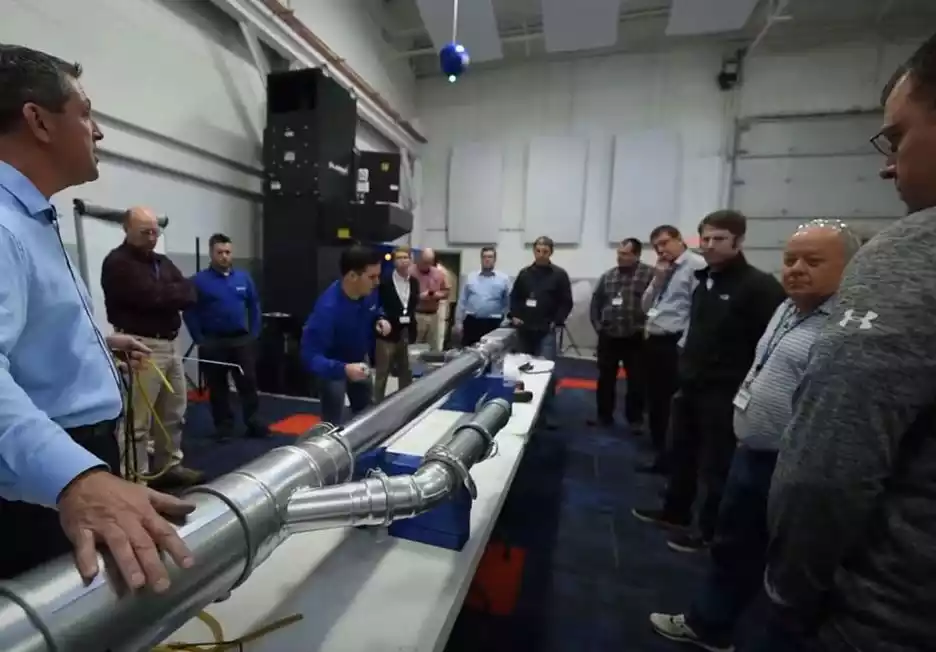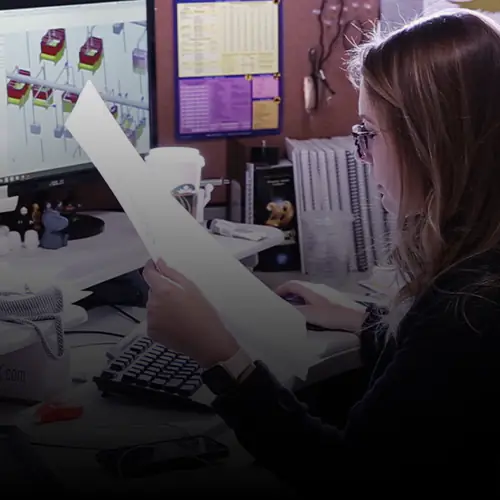CLEAN AIR ACADEMY
Become an Air Quality Expert
Air quality is a critical issue for manufacturers. Fumes and particulates created by welding and other industrial manufacturing processes aren’t just unpleasant—they have real health and safety consequences for employees and having dirty equipment and facilities also cuts down the useful life of your capital equipment purchases. This is why RoboVent has launched our Clean Air Academy tailored to help manufacturers learn first-hand the scientific and practical lessons to improve the air quality and production processes within their plant.
BECOME AN AIR QUALITY EXPERT
WHAT YOU’LL LEARN
The Clean Air Academy is a two-day course that teaches the fundamentals of industrial air quality, ventilation and filtration.
Day one will start with the basics: How does air move and behave? How do factors like temperature, humidity, elevation, and the presence of contaminants change the behavior of air? And how do you use that knowledge to your advantage in designing or selecting an air quality remedy? Then we’ll cover the fundamentals of industrial ventilation and filtration. Participants will gain new insight into the technologies that are available to capture, clean and filter air, and how to match the right solutions to specific applications and plant characteristics.

Day 1
1.1 Introduction to Industrial Hygiene & OSHA Regulations
A basic understanding of industrial hygiene is helpful to understand why dust control systems are required. What are the important risks associated with various manufacturing processes? How do you ensure health and safety of your staff? How do we comply with regulatory bodies and stay out of trouble when we have air quality issues? Learn to recognize and understand exposure effects of dust and fumes on the human body and gain understanding of regulations, their implications and consequences.
Day 1
1.2 Physics of Air
Understand the constituents that make up air, conditions that affect air density, and how density affects ventilation systems.
Day 1
1.3 Characteristics of Weld Fumes and Other Contaminants
Airborne particulates wreak havoc on our facilities. What are these nuisances? How do we understand their characteristics so that they can be captured and controlled? We’ll take a closer look at the types of fumes and particulates generated by different processes and the risks and challenges of each.
Day 1
1.4 Capture and Conveying Methods
To remove dusts from the workplace environment, the dusts must be captured. What are the various capture methods? Which ones work … and which ones don’t? This session will focus on design principals of capture and conveying systems, including duct design and duct velocities. We will also discuss design for robotic welding cell enclosures.
Day 1
1.5 Ambient Air Filtration
Ambient Air Filtration can be an effective method for controlling airborne particulates in a large manufacturing facility—but this option is often overlooked. What is Ambient Air Filtration, how does it work, and how is this strategy implemented?
Day 2
2.1 Fans & Fan Curves
Understand the different types of fans, how they work and how to predict their performance. We’ll review fan curves and what they mean.
Day 2
2.2 Filtration of Dusts
This session will explore the strengths, costs and weaknesses of air filtration considerations. Participants will learn how to choose the right options to effectively remove particulate from the air stream in their facility and how to calculate energy savings for systems that return air to the facility vs. those that discharge to the outside.
Day 2
2.3 Spark Arrestance and Combustible Dust
Fires in an industrial ventilation system is an obvious concern in our manufacturing areas. What are sparks, how are they created, and— most importantly—how are they stopped? What are the available options for spark arrestance and fire suppression systems? We’ll take a closer look at the risks of fires and explosions, especially as related to combustible dusts, as well as compliance with the latest NFPA Combustible Dust standards.
Day 2
2.4 Retrofitting Existing Systems
Many times an existing dust control system can be retrofitted to either perform more effectively or be used to capture the dust from a new process. How do you go about this? How do you identify the limitations? And what factors must be considered during the design?
Day 2
2.5 Lab
We apply everything we learned in real world scenarios in our Lab & Testing area.
* Exact content and schedule subject to change.
DO YOU HAVE THE KNOWLEDGE YOU NEED?
Do you have the knowledge you need to make effective decisions regarding air quality issues in your plant? RoboVent has developed a two-day course designed to give engineers, facility managers and maintenance staff a solid foundation in the science of air quality management. Participants will come away armed with the knowledge they need to recognize air quality problems, evaluate remedy options, make informed equipment selections, and maintain a healthy work environment.
LODGING
All travel, lodging and accommodation costs must be covered by the attendee. We suggest these hotels:
TOWNE PLACE SUITES CHESTERFIELD
Welcome to the TownePlace Suites Chesterfield, a 102 rooms hotel located in the heart of Chesterfield, Michigan, in the suburbs of Detroit. Relax and feel at home while enjoying a fully equipped kitchen and high-speed Internet access. Contact RoboVent to receive booking links for a special rate.
45255 Marketplace Boulevard, Chesterfield, Michigan, USA, 48047
P: +1 586-949-3333
F: +1 586-949-3307
Contact RoboVent to receive booking links for a special rate.








